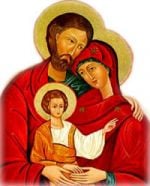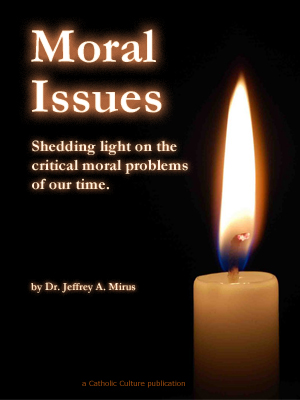Catholic Activity: December 28 - Feast of the Holy Innocents
Father Weiser explains the liturgy, customs and traditions attached to this feast of the Holy Innocents on December 28, within the Octave of Christmas.
DIRECTIONS
THE HOLY INNOCENTS (December 28)
King Herod (4 B.C.) is considered one of the cruelest tyrants in history. In the course of his reign, it is reported, he drowned his brother-in-law, a youth of sixteen, who was high priest of Israel; he killed his uncle Joseph, his wife, Mariamne, and his mother-in-law, Alexandra. His brother-in-law, Kostobar, together with several members of his family, was killed by his order. A few years before the birth of Christ, Herod murdered his two sons, Alexander and Aristobulus, and had three hundred officials slain whom he accused of siding with the two young men. In the year 4 B.C., only five days before his death, he had his first-born son, Antipater, executed.
Like all tyrants, he killed thousands of innocent people whom he suspected of plotting against him. He was so suspicious of his own subjects and terrified at the thought of rebellion that he ordered the people by special decrees to keep busy at all times. He forbade them to meet together, to walk or eat in groups, and he had his spies everywhere, in both the city and rural districts, watching every move of the citizens. Public and private executions of countless victims took place in his citadel of Hyrcania, overlooking the Dead Sea.
This is the man, Saint Matthew reports, who "sent and slew all the boys in Bethlehem and its neighborhood who were two years and under" (2, 16). How many children were killed? At times their number has been wildly exaggerated as hundreds, even thousands. An approximate figure might be estimated, however, because at the time of Christ, Bethlehem was a small town or village. Assuming a population of two thousand souls, the number of boys of two years and under might be around thirty. Most modern scholars consider even this figure too high and put the number at fifteen or twenty victims. In the martyrologies (catalogues of saints'' feasts) of the Greek Rite the number of Innocents is still officially given as 14,000. This is clearly due to legends or to uncritical assumptions of medieval writers, for the oldest lists (of the first millennium A.D.) make no mention of the number of babies who were killed. The fact, however, that they truly died for Christ and deserved the honor and title of martyrs is already proclaimed in the writings of Saint Irenaeus (about 200) and Saint Cyprian (258).
In the West, the Feast of the Nativity very soon occasioned the solemn memory of the Innocents on December 28. The earliest recorded mention of their feast is found in the church calendar of Carthage of the end of the fourth century. The words of Jeremiah quoted by Saint Matthew (2, 18) about "Rachel weeping for her children" inspired the celebration of Innocents'' Day as a feast of mourning; the Church, as a second Rachel, would lament the massacre of its little ones. Hence the penitential character of the liturgy (except on Sunday): purple color, no Gloria, no Alleluia. In the early centuries the Christians in Rome were expected to fast on this day by abstaining from meat and from foods cooked in fat.
In contrast to this note of mourning, the octave day of the Innocents (now abolished) on January 4 was dedicated to the thought of their glory, the Mass being celebrated in red, with Gloria and Alleluia.
CUSTOMS OF INNOCENTS' DAY
FEAST OF THE BOY BISHOP
Pope Gregory IV (844) declared his predecessor Saint Gregory I (604) the patron of schools and choirs, and his feast day (March 12) as a holyday for all students and choirboys. During the following centuries the custom developed that one of the boys, dressed in pontifical robes, would impersonate the patron saint. He was usually accompanied by two other boys serving as "chaplains." The celebration originally consisted of a devotional service at which the boy bishop presided and preached a sermon. Soon there was added a "chapter" ceremony; the boy bishop would examine his fellow students and also the adult audience with questions on religious doctrine, give praise or reproach, and distribute presents or punishments.
From the eleventh century on, the Boy Bishop's Feast was transferred in most countries to December 28, for by that time Innocents' Day had become the official feast of students and choirboys. Unfortunately, it was soon identified with the Feast of Fools in many places, and for a long time reflected some of the irreverent abuses of that strange celebration. In the fourteenth century, however, it began to be purged of those alien elements and was moved to December 5, the eve of the Feast of Saint Nicholas, who was the patron saint of children. Thus, when the Feast of Fools was finally suppressed in the fifteenth century, Boy Bishop's Day was already safely out of the way and escaped annihilation. Gradually the impersonation changed from the original one of Saint Gregory (which had been forgotten long before) to that of Saint Nicholas. In many countries of the continent the role of the bishop was assumed by adults. Representing Saint Nicholas, the venerable figure now paid an annual visit to children on the eve of "his" feast. Thus originated the charming celebration that is still held in the Catholic countries of central Europe and in Holland on the eve of St. Nicholas's Day.
OTHER FOLKLORE
During the past centuries, and up to the present, Innocents' Day was the traditional feast of the young ones in many religious communities. The novices had the privilege of sitting in the first places at meals and meetings. In many convents and monasteries the last one to have taken vows was allowed to act as superior for the day. The youngest members of the community received congratulations, enjoyed a holiday, and baby food was served them at dinner.
In central Europe, Innocents'' Day is one of the traditional "spanking" days of the ancient fertility cult. Groups of children go from house to house with branches and twigs, gently striking women and girls while they recite an old verse that contains the original wish of this pre-Christian practice:
Many years of healthy life,
Happy girl, happy wife:
Many children, hale and strong,
Nothing harmful, nothing wrong,
Much to drink and more to eat;
Now we beg a kindly treat.
In German-speaking countries a strange legend and superstition originated from a combination of the Christian festival with the pre-Christian belief that the souls of the dead roamed the earth after the solstice of winter. During the night of December 28, so the story goes, the souls of children who have died without baptism wander through the open spaces around farms and villages, led by their frightening custodian, Lady Hel (who was the Germanic goddess of the underworld; hence our word "hell"). Each child carries a pitcher filled with the tears that it shed during the past year in the solitude and anguish of Hel's dungeon. Now God in His mercy allows these children to be saved on Innocents' Day. If a human discerns their gentle cries through the howling storm of the winter night, and if he sees the formless shape of such a ghost child fluttering in the dark, then he must quickly call it by a Christian name. Thus the child can be released from the power of Lady Hel and, bearing a "baptismal" name, it may join the Holy Innocents in the bliss of eternal happiness.
THE FEAST OF FOOLS In order to keep at least the clergy from the accustomed practice of reveling and masquerading during Christmas week, the authorities of the Church introduced, in the eleventh century, special feast days for the various ranks of clerical communities: Saint Stephen's for the deacons, Saint John's for the priests, the Feast of the Innocents for choirboys and students, and New Year's Day or Epiphany for the subdeacons. This well-meant effort, however, had an unexpected adverse effect. Instead of keeping the clergy from joining the silly revels of the laity, it gradually occasioned the identification of these clergy feasts with the very abuses they were to prevent.
In France especially, the clergy feasts turned into a Festival of Fools (Festum Fatuorum, Fête des fous) which invaded the very house of God. One from the ranks was chosen as "Bishop of Fools" or "Pope of Fools." Dressed in the respective pontifical regalia he presided for one or more days during Christmas week over the recitation of the Divine Office in the choir. All kinds of jokes and tricks were played on him, and by him on others. These abuses, connected with reveling, dancing, mumming, and banqueting, became so traditional that some priests would leave money in their testaments for the upkeep of these revels.
As early as 1199 Archbishop Odo (Eudes) de Sully of Paris issued regulations to restrict the abuses of these clergy feasts. The Council of Basle, in 1435, reiterated the prohibition. Such edicts, however, had no lasting effect. In 1444 the theological faculty of the University of Paris came out with a stern condemnation of the Feast of Fools. In the following year King Charles VII forbade the practice in his whole realm. Backed by the power of secular punishment, he finally succeeded in stamping out the abuse. The last occasional remnants of the Feast of Fools disappeared everywhere when in 1748 Pope Benedict XIV in his encyclical Super Bacchanalibus ("Concerning Revels") reiterated the condemnation of New Year''s and Carnival excesses.
Activity Source: Handbook of Christian Feasts and Customs by Francis X. Weiser, S.J., Harcourt, Brace and Company, New York, 1958






